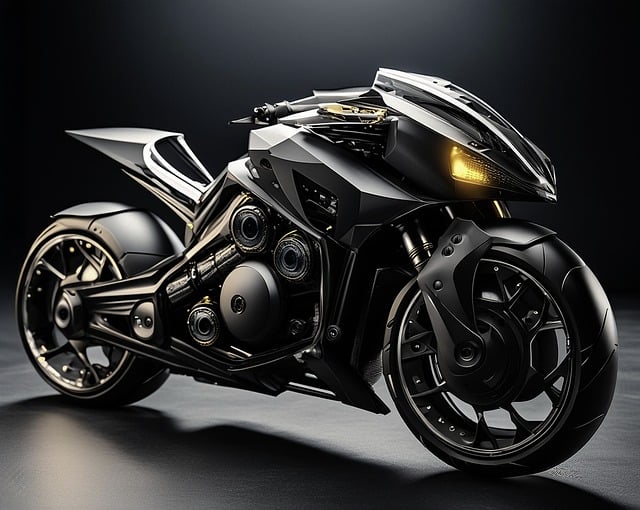Owning a motorcycle brings freedom, adventure, and excitement, but it also comes with responsibilities—chief among them is having the right insurance. Motorcycle insurance protects you financially in case of accidents, theft, or damages, ensuring you can enjoy the ride without worrying about the unexpected. But how does motorcycle insurance work, and why is it essential?
Understanding Motorcycle Insurance
Motorcycle insurance operates similarly to auto insurance, offering a range of coverages tailored to the unique risks faced by motorcyclists. Policies typically include:
- Liability Coverage:
- Covers costs if you’re at fault in an accident, including bodily injury and property damage to others.
- Example: If you accidentally damage a parked car, liability coverage pays for the repairs.
- Collision Coverage:
- Pays for damage to your motorcycle in an accident, regardless of fault.
- Comprehensive Coverage:
- Protects against non-collision events like theft, fire, or vandalism.
- Uninsured/Underinsured Motorist Coverage:
- Covers your expenses if you’re hit by a driver without adequate insurance.
- Medical Payments Coverage:
- Pays for medical bills resulting from an accident, regardless of fault.
To better understand liability coverage and its importance, read here.
How Does Motorcycle Insurance Work?
When you purchase a motorcycle insurance policy, you pay a monthly or annual premium to the insurer. In exchange, the insurer agrees to cover specific costs outlined in the policy, up to the coverage limits. Here’s how it works in real-life scenarios:
- In an Accident:
If you’re at fault, liability coverage pays for damages or injuries to others. If you have collision coverage, your insurer also pays for repairs to your motorcycle. - In Case of Theft:
Comprehensive coverage compensates you for the value of your motorcycle if it’s stolen. - When You File a Claim:
You’ll pay a deductible (e.g., $500), and the insurer covers the remaining costs up to your policy limits.
Legal Requirements for Motorcycle Insurance
Most states require motorcyclists to carry minimum liability insurance, similar to auto insurance. The required limits vary by state, but they often include:
- Bodily Injury Liability:
Example: $25,000 per person, $50,000 per accident. - Property Damage Liability:
Example: $20,000 per accident.
Riding without the required insurance can result in fines, license suspension, and even impoundment of your motorcycle. Learn more about the consequences of not having proper insurance.
Key Benefits of Motorcycle Insurance
- Financial Protection:
- Covers the high costs of medical bills, legal fees, and property repairs.
- Peace of Mind:
- Knowing you’re protected allows you to enjoy your rides stress-free.
- Compliance with Laws:
- Avoids legal penalties and ensures you’re riding within the law.
- Customization Options:
- Policies can be tailored with add-ons like roadside assistance or custom parts coverage.
Factors Affecting Motorcycle Insurance Premiums
Motorcycle insurance premiums are influenced by various factors, including:
- Type of Motorcycle:
- High-performance bikes often cost more to insure due to increased risk.
- Riding History:
- A clean record results in lower premiums, while accidents or violations increase costs.
- Location:
- Urban areas with higher accident rates lead to higher premiums.
- Coverage Limits:
- Opting for higher limits increases premiums but provides better protection.
Optional Add-Ons for Enhanced Protection
Motorcycle insurance policies often offer additional coverages for greater peace of mind:
- Custom Parts and Equipment Coverage:
- Protects aftermarket parts or upgrades on your motorcycle.
- Roadside Assistance:
- Covers towing, flat tires, and other emergencies while on the road.
- Total Loss Replacement:
- Replaces your motorcycle with a new one if it’s totaled.
Real-Life Example: Why Motorcycle Insurance Matters
Consider a scenario where you’re involved in an accident:
- Medical Bills: $15,000
- Damage to the Other Party’s Car: $10,000
- Damage to Your Motorcycle: $5,000
Without insurance, you’d be responsible for the entire $30,000. With a comprehensive motorcycle insurance policy, these costs would be covered, less your deductible.
Tips to Save on Motorcycle Insurance
Reducing your premiums doesn’t mean sacrificing coverage. Here are some tips:
- Shop Around:
- Compare quotes from multiple insurers to find the best rates.
- Bundle Policies:
- Combine motorcycle insurance with auto or home insurance for discounts.
- Take a Safety Course:
- Completing an approved motorcycle safety course often qualifies you for discounts.
- Maintain a Clean Record:
- Avoid accidents and violations to keep premiums low.
- Increase Your Deductible:
- Opting for a higher deductible reduces your monthly premium.
For more ways to lower premiums, check out these tips.
Motorcycle insurance isn’t just a legal requirement—it’s a vital safety net that protects you financially and ensures you can enjoy the freedom of the open road. By understanding how it works and tailoring your policy to your needs, you can ride with confidence, knowing you’re prepared for any challenges that come your way. Whether you’re a seasoned rider or new to motorcycling, investing in comprehensive insurance is one of the smartest decisions you can make.



